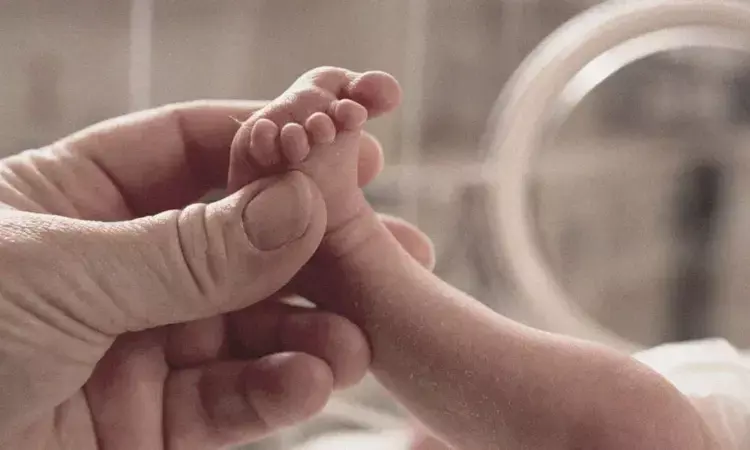- Home
- Medical news & Guidelines
- Anesthesiology
- Cardiology and CTVS
- Critical Care
- Dentistry
- Dermatology
- Diabetes and Endocrinology
- ENT
- Gastroenterology
- Medicine
- Nephrology
- Neurology
- Obstretics-Gynaecology
- Oncology
- Ophthalmology
- Orthopaedics
- Pediatrics-Neonatology
- Psychiatry
- Pulmonology
- Radiology
- Surgery
- Urology
- Laboratory Medicine
- Diet
- Nursing
- Paramedical
- Physiotherapy
- Health news
- Fact Check
- Bone Health Fact Check
- Brain Health Fact Check
- Cancer Related Fact Check
- Child Care Fact Check
- Dental and oral health fact check
- Diabetes and metabolic health fact check
- Diet and Nutrition Fact Check
- Eye and ENT Care Fact Check
- Fitness fact check
- Gut health fact check
- Heart health fact check
- Kidney health fact check
- Medical education fact check
- Men's health fact check
- Respiratory fact check
- Skin and hair care fact check
- Vaccine and Immunization fact check
- Women's health fact check
- AYUSH
- State News
- Andaman and Nicobar Islands
- Andhra Pradesh
- Arunachal Pradesh
- Assam
- Bihar
- Chandigarh
- Chattisgarh
- Dadra and Nagar Haveli
- Daman and Diu
- Delhi
- Goa
- Gujarat
- Haryana
- Himachal Pradesh
- Jammu & Kashmir
- Jharkhand
- Karnataka
- Kerala
- Ladakh
- Lakshadweep
- Madhya Pradesh
- Maharashtra
- Manipur
- Meghalaya
- Mizoram
- Nagaland
- Odisha
- Puducherry
- Punjab
- Rajasthan
- Sikkim
- Tamil Nadu
- Telangana
- Tripura
- Uttar Pradesh
- Uttrakhand
- West Bengal
- Medical Education
- Industry
Lung ultrasound scores can predict patent ductus arteriosus ligation in extremely preterm infants

China: A recent study in Pediatric Pulmonology has revealed that lung ultrasound scores (LUSs) at an early stage of life can predict patent ductus arteriosus (PDA) ligation in extremely preterm infants. The score would help reduce morbidity by decreasing the magnitude and duration of respiratory support.
PDA ligation is corrective surgery for children whose ductus arteriosus does not close after birth. The ductus arteriosus is a blood vessel that joins the pulmonary artery (the main artery to the lungs) to the aorta (the main artery to the body). The treatment aims to close the patent ductus arteriosus to reverse the effects of the increase in blood volume and prevent complications.
Chuanzhong Yang, Southern Medical University, Shenzhen, China, and colleagues aimed to investigate whether lung ultrasound score can predict patent ductus arteriosus ligation in a prospective study.
The researchers enrolled preterm infants ≤25 weeks of gestational age (GA). On the 14th day of life, a lung ultrasound was performed. A score between 0 and 4 was assigned to each lung zone. A receiver-operating characteristic (ROC) curve was constructed to evaluate the ability of the lung ultrasound scores to predict ligation.
The authors reported the following findings:
- Eighty-one infants were eligible with a median gestational age and birth weight (BW) of 25 weeks and 710 g, respectively.
- The median time from birth to ligation was 35 days.
- Those who underwent ligation had a longer time of mechanical ventilation (34 versus 19), shorter time of noninvasive respiratory support (39 versus 50), higher incidence of bronchopulmonary dysplasia (BPD), and severe BPD.
- The LUSs had an area under the ROC of 0.96 for the prediction of ligation.
- A LUSs cutoff of 36 has a sensitivity and specificity of 96% and 86% and positive and negative predictive values of 82% and 98%, respectively.
"Lung ultrasound scores at an early stage of life can predict PDA ligation in extremely preterm infants," the researchers wrote. "It would be helpful to reduce morbidity by reducing the magnitude and duration of respiratory support."
Reference:
Zong, H., Huang, Y., Huang, Z., Zhao, J., Lin, B., Fu, Y., Lin, Y., Yu, Y., Sun, H., & Yang, C. Lung ultrasound score predicts patent ductus arteriosus ligation among neonates ≤25 weeks. Pediatric Pulmonology. https://doi.org/10.1002/ppul.26531
Dr Kamal Kant Kohli-MBBS, DTCD- a chest specialist with more than 30 years of practice and a flair for writing clinical articles, Dr Kamal Kant Kohli joined Medical Dialogues as a Chief Editor of Medical News. Besides writing articles, as an editor, he proofreads and verifies all the medical content published on Medical Dialogues including those coming from journals, studies,medical conferences,guidelines etc. Email: drkohli@medicaldialogues.in. Contact no. 011-43720751


